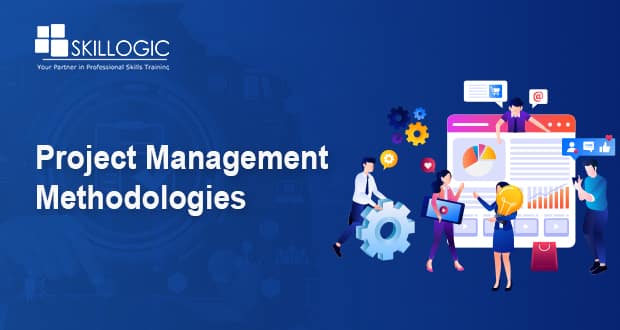In short, the primary utility of project management is that it helps achieve the project goal(s) on time, on budget, and with the optimal amount of resources. To carry out project management, some type of methodology, method, or set of techniques is usually applied. All projects, as well as their equipment, environments, and conditions, are different and each one requires a different and adjusted method. At the same time, all teams, projects, and organizations have similar characteristics. But whatever characteristics are used, the role of software such as this free project management software 2022 cannot be ruled out.
This means that the more popular project activity management becomes, the more methods, frameworks, and concepts appear, and the more practices are developed within established methodologies. In our article, we explain the most used currently.
What is the methodology of a project?
A project management methodology is a set of principles, tools, and techniques that are applied to plan, develop, implement, and manage projects. Today there are various methodologies, frameworks, and models, or even mixtures of several. Like everything, they are not a magic wand that will ensure the success of your project, since each one has its advantages and disadvantages. What is certain is that by knowing the types of methodology for a project and its main ideas, you will be able to find one that best suits your activities and improve all the processes related to the completion of the project.
Types of methodology for a project
Waterfall
Agile
Hybrid
scrums
Read
kanban
Waterfall
The main characteristic of the waterfall-type project management methodology is that the activities are developed in consecutive order and stages one after the other. In the same way, this type of methodology is better adapted to the classic project life cycle model. In the beginning, a project plan is made with all specifications and required documents. A fixed list of requirements and resources is drawn up, and fixed deadlines are defined. All of this is shown in a project schedule. Then the stages are executed one after another to achieve the objective of the project. Always following the project plan to the maximum extent. For each intermediate result, tests are carried out, and then the final version of the project objective is delivered.
Agile
First of all, it must be made clear that we are talking about project management techniques rather than a project management methodology. That is, “Agile” is a series of agile techniques that are usually considered as a methodology. In short, general planning is done at the beginning of the project, and then the activities are carried out in subprojects. At the end of each subproject, a certain result is delivered. In this way it is easier to change the initial plan, add details or develop an idea of the general plan as new requirements or conclusions appear. The main characteristic of this project management model is its high flexibility and receptivity to changes in the project. There is no strict plan to follow and the project does not need to be done in a predefined order at planning time.
Hybrid
The methodology of a project that is carried out with hybrid management is based on a mixture of waterfall methods and agile methods. It’s about extracting the advantages of both and applying them in your project when possible. Thus, it is well suited to many types of projects. In the beginning, a plan is made with a sequence of activities and with well-defined specifications and requirements according to the waterfall-type project methodology. But the implementation of the project is done based on agile project management techniques. This way you can work in short iterations, deliver certain results every time and introduce changes when they are required.
Scrum as an Agile framework
One of the most used agile methodologies is Scrum. It is not a project management methodology, but rather a framework within agile management methodologies. The main idea behind Scrum is the flexibility to react quickly to the need for changes, the collaborative work of a small team, and the delivery of results in iterations. Usually, the process is like this. In the beginning, there is a list of activities (backlog). The Product Owner defines the priorities for this list. And the team starts working on these activities. The work is done in close collaboration, with daily meetings to keep everyone up to date. In the end, a reflection (retrospective) is made where the team analyzes what has been done and where they could improve.
Learn
The Lean project management methodology focuses on optimizing the process by minimizing waste. And how is this achieved? Following a series of principles throughout the life cycle of the project. First, define what provides the most value to customers so you know what exactly needs to be worked on. Activities with results that have no value are eliminated. To minimize waste, every step, process, and resource applied is evaluated. To optimize the workflow, we try to minimize any waste: periods of inactivity, waiting, etc. In addition, all products are delivered if there is demand. Finally, the methodology for a project with a focus on Lean techniques emphasizes the continuous improvement of the process. In other words, it is not enough to improve an aspect and take it for granted. You have to look for perfection and try to find different ways to minimize waste in carrying out projects and activities.
Kanban
Among the agile methodologies for project management is the Kanban approach. Kanban principles and practices are often used in the process of developing a product or service. In this way, each work step is displayed on a Kanban board divided into states, dates, or other criteria, to later be able to control the progress, organize and efficiently carry out the tasks and find the need and ways to improve the process. The main idea in project management with a methodology based on Kanban tools is that process changes should be gradual. It is not about drastically altering all processes, roles, and practices all at once. Rather, it should be a step-by-step approach that takes into account the views of each team member. The execution stage of the project is visualized making it clear to everyone what needs to be done, what is in progress, who is working on what, and what is the list of pending tasks. In addition, a lot of attention is paid to limiting the work in progress.
So…which method will you choose?



